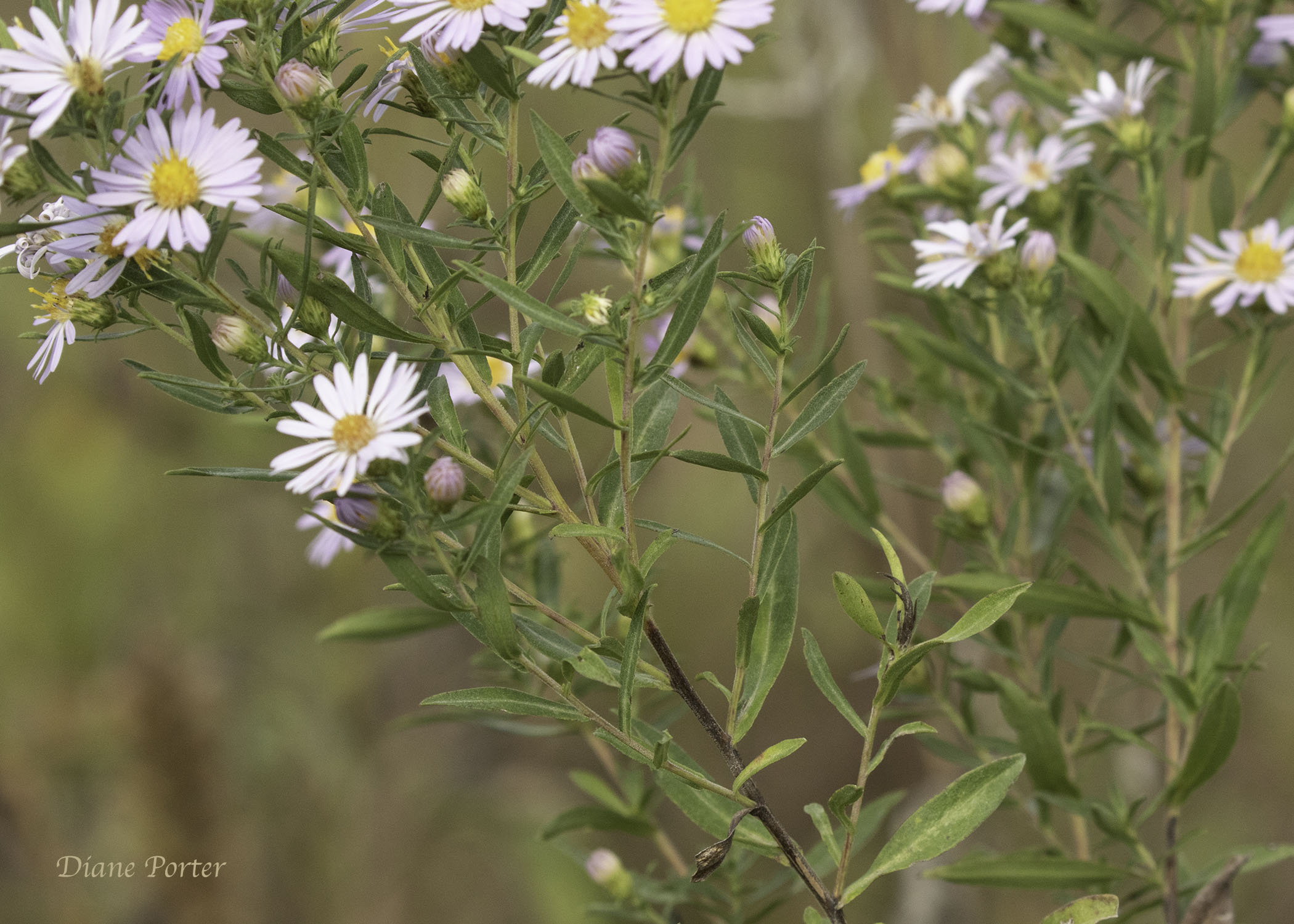Diane Porter of Fairfield first published this post on My Gaia, an email newsletter “about getting to know nature” and “giving her a helping hand in our own backyards.” Diane also maintains the Birdwatching Dot Com website and bird blog.
If I indulge my fantasy, I imagine asters as sentient beings, each with its own personality. If that were the case, then Willow Asters (Symphyotrichum praealtum) would be aristocrats, with their subtle lavender petals, slender leaves, and graceful poses.
If she were a lady, she would host gracious, elegant parties by a lake. Suitors would long for her attention.
There are indeed beings who visit her every hour of the day. She is always attended by bees, butterflies, and myriad other insects.

Bumblebee

Painted lady butterfly

Golden soldier beetle
As in other asters, each Willow Aster flowerhead looks like a daisy, with petals that radiate out from a central disk. It looks like a single flower. Actually it is a composite of 30-or-so individual, miniature flowers, called florets, all bound together like a bouquet.
In a magnified view, the florets open first around the outside edge of the central disc, exposing the reproductive parts for pollination.

The central disk looks yellow when the flowerhead opens, turning brownish red as it matures. With the help of a microscope, the individual florets appear. At first they are closed, like buds (which is what they are). As they open and get pollenated, they darken.
IDENTIFYING WILLOW ASTER
Some asters are a little challenging to name, because the identifying field marks are small. However, Willow Asters are easy.
All of her leaves are long and slender. Even at the base of the plant, where some other asters have wider leaves, those of Willow Aster are narrow.

And there’s a neat trick that clinches the ID on this flower. It takes magnification. You need an inexpensive 10-power loupe, a magnifier that fits in your pocket.

Pick a leaf from a Willow Aster, and look at its lower surface through the magnifier. Suddenly you see the vein structure of the leaf.

The leaf’s veins divide the space into small, regular, closed areas. Like a net. The leaf is described as reticulated — which means like a net. It’s the trademark of Willow Aster. This is reason enough for me to carry my loupe with me always during aster blooming season.

WHERE TO FIND WILLOW ASTER
Willow Aster is not rare where I live, in southeast Iowa. If you walk in grassy fields, especially in a damp areas, you may find her blooming profusely.
Plant with lavender petals and yellow-to-brownish central discs:

It’s fairly widespread in central and eastern North America. Here is the native range map of Willow Aster, by BONAP (The Biota of North America Program). Light green means found in a county. Dark green means found in the state but not the county.

Fall is when asters of many species bloom. Now’s the time!
I have to end now, because I need to go outside and admire the asters.


1 Comment
Thank you, BH...
…for providing these Wednesday reminders that many Iowans enjoy and care about our native flora. Especially these days, that is reassuring. And thank you to the generous contributors, including Diane Porter, who provide the wonderful posts and photos.
PrairieFan Sat 2 Nov 3:40 PM